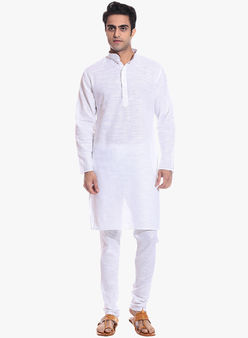Ageless Indian Dresses for All Occasions
India, by and large, is a tropical country with majority of its population staying in hot and humid conditions. Though the geographical extent of India is huge, it is roughly divided into half by the ‘Tropic of Cancer’, with the southern half hot and humid and the northern half hot and dry. The Northern half has a variegated topography containing highly populated Gangetic Plain, the Thar Desert to the West, and the Himalayan mountainous range in the north. The south is divided into several plateaus, two coastal plains, and river plains. In keeping with this primarily tropical expanse, traditional Indian clothing is essentially loose fitting.

India, apart from the Himalayan region which forms the northern boundary from Arunachal Pradesh in the east to Jammu and Kashmir in the west, is predominantly hot in summer and cool in winter. Though winters are quite severe in north and North West regions of India, it does not last long. At most, these areas have severe winters for about two months, while three months are pleasant. The remaining seven months are hot and humid or hot and dry. Humidity increases as you travel closer to the water bodies: Bay of Bengal in the East and Arabian Sea in the West. Likewise, as you move more inwards, the air gets drier. Whether dry or humid, India mainland remains hot for about seven months in a year. Accordingly, dresses worn by Indian men and women are loose hanging and of lighter shade.
Dresses for Men
Men in India prefer wearing kurtas and dhotis, or kurtas and pyjamas. Ideally, these are made from cotton fabrics which are light and easy to wear. Kurtas form the upper part of men’s apparel while dhotis or pyjamas cover the legs. These dresses could be worn to every place and on any occasion. These loose fitting garments allow your body to stay cool even in the most torrid conditions of heat and humidity. For normal day to day work, men prefer wearing these dresses in light shades such as white, off-white, cream, or beige. This is done to keep off the heat as far as possible. Though these are not popularly worn in offices or in workplaces, they are very common in rural and semi-urban areas. Further, as compared to shirts and trousers, these are cheaper and are easy to maintain.
Kurtas and dhotis or pyjamas are mostly worn on social occasions or gatherings. In such occasions, these apparels are cut out from materials like sequin, satin and silk apart from cotton. This traditional Indian clothing has become a style statement and is often tailored as designer wear.
An important part of men’s dress, particularly in interior regions, is the turban. This is popular among men folk in Northern Indian Plains, Rajasthan, Madhya Pradesh and Chattisgarh. This is a headgear to protect your head and face from the intense summer heat waves, called ‘Loo’, that blow over North India.
Dresses for Women
Indian women traditionally wear saree, salwar, churidaars, ghagras and lehengas. All these are essentially loose fitting and do not cling to your body. Among these, saree is predominant and could be worn to work as well as parties and festivals. The saree has an ageless appeal and looks elegant on Indian women. This is essentially a 5-7 yards long cloth worn with a blouse. Materials used include cotton, silk, muslin, and synthetic fibers. This traditional Indian clothing has gained popularity internationally.



